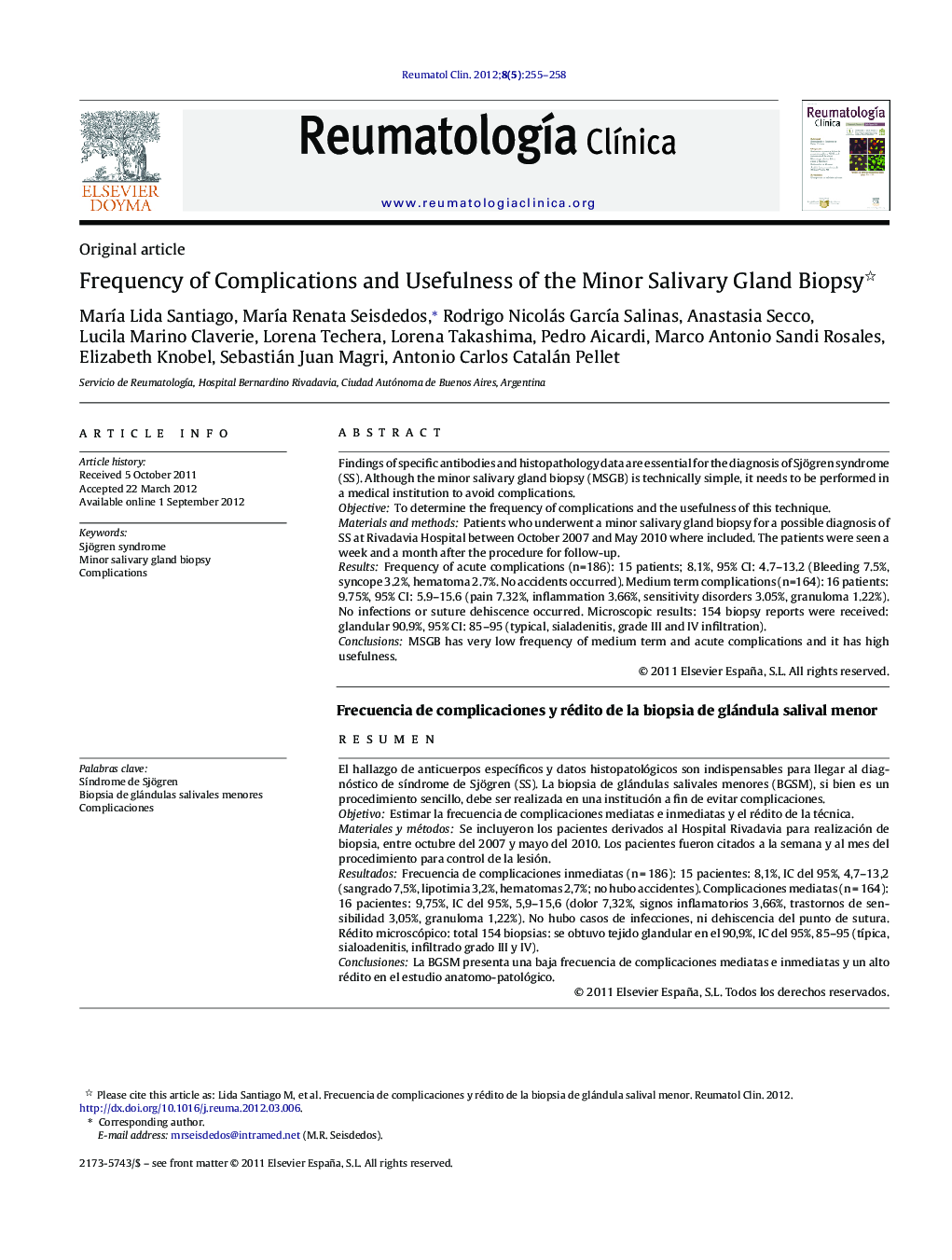| Article ID | Journal | Published Year | Pages | File Type |
|---|---|---|---|---|
| 3384472 | Reumatología Clínica (English Edition) | 2012 | 4 Pages |
Findings of specific antibodies and histopathology data are essential for the diagnosis of Sjögren syndrome (SS). Although the minor salivary gland biopsy (MSGB) is technically simple, it needs to be performed in a medical institution to avoid complications.ObjectiveTo determine the frequency of complications and the usefulness of this technique.Materials and methodsPatients who underwent a minor salivary gland biopsy for a possible diagnosis of SS at Rivadavia Hospital between October 2007 and May 2010 where included. The patients were seen a week and a month after the procedure for follow-up.ResultsFrequency of acute complications (n=186): 15 patients; 8.1%, 95% CI: 4.7–13.2 (Bleeding 7.5%, syncope 3.2%, hematoma 2.7%. No accidents occurred). Medium term complications (n=164): 16 patients: 9.75%, 95% CI: 5.9–15.6 (pain 7.32%, inflammation 3.66%, sensitivity disorders 3.05%, granuloma 1.22%). No infections or suture dehiscence occurred. Microscopic results: 154 biopsy reports were received: glandular 90.9%, 95% CI: 85–95 (typical, sialadenitis, grade III and IV infiltration).ConclusionsMSGB has very low frequency of medium term and acute complications and it has high usefulness.
ResumenEl hallazgo de anticuerpos específicos y datos histopatológicos son indispensables para llegar al diagnóstico de síndrome de Sjögren (SS). La biopsia de glándulas salivales menores (BGSM), si bien es un procedimiento sencillo, debe ser realizada en una institución a fin de evitar complicaciones.ObjetivoEstimar la frecuencia de complicaciones mediatas e inmediatas y el rédito de la técnica.Materiales y métodosSe incluyeron los pacientes derivados al Hospital Rivadavia para realización de biopsia, entre octubre del 2007 y mayo del 2010. Los pacientes fueron citados a la semana y al mes del procedimiento para control de la lesión.ResultadosFrecuencia de complicaciones inmediatas (n = 186): 15 pacientes: 8,1%, IC del 95%, 4,7–13,2 (sangrado 7,5%, lipotimia 3,2%, hematomas 2,7%; no hubo accidentes). Complicaciones mediatas (n = 164): 16 pacientes: 9,75%, IC del 95%, 5,9–15,6 (dolor 7,32%, signos inflamatorios 3,66%, trastornos de sensibilidad 3,05%, granuloma 1,22%). No hubo casos de infecciones, ni dehiscencia del punto de sutura. Rédito microscópico: total 154 biopsias: se obtuvo tejido glandular en el 90,9%, IC del 95%, 85–95 (típica, sialoadenitis, infiltrado grado III y IV).ConclusionesLa BGSM presenta una baja frecuencia de complicaciones mediatas e inmediatas y un alto rédito en el estudio anatomo-patológico.
